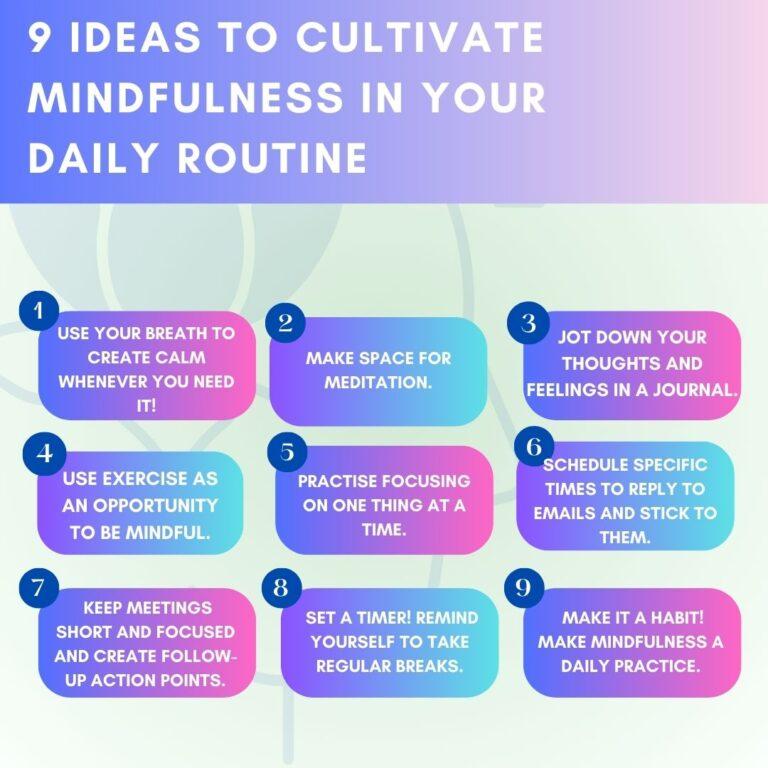It was 8:30 AM, and as Emily entered the offices of the small startup publishing house she was employed by in Central London, her mind was completely preoccupied with the pressure of an important presentation to potential investors that she had been assigned to do. It had been scheduled to take place in four days’ time at 10.00 AM, and she could feel the clock ticking towards the assignment, along with the building anxiety she felt to perform well. Her company had been experiencing an upsurge in demand for services, which was exciting; however, like most small startups, along with this growth came the ‘pains’ of the lack of cash to support this increase in demand. The business was stretched to the limit and needed more staff and bigger premises. If her presentation was successful, her company would receive the funding it so desperately needed to finance this growth. She just had to perform well, her small team of work colleagues were relying on her and she was feeling the full weight of the responsibility to achieve the best result possible.
However, work pressures weren’t the only thing troubling Emily. As a single mum bringing up a 12-year-old daughter, she also constantly worried about her dwindling personal finances. Emily was really feeling the rise in living costs in all aspects of her life. She really tried to ensure that both herself and her daughter ate healthily, but her weekly shopping bills seemed to be climbing, and her energy bills were eye-watering. The week before, she’d opened a letter with a notification that her one-year apartment lease was coming up for renewal. Where had that year gone? She’d been informed that there had been a rent review. If she chose to stay, the rent would be higher for the next year. As she settled at her desk and tried to focus on preparing her imminent investor pitch, her mind kept wandering back to worrying about her personal finances. Further thoughts circled down on her as she tried to settle into her work – there were the overdue payments for her daughter’s school trip… the dental work she really needed to get sorted… her mum’s birthday coming up… the demands seemed endless – she was being pulled in all directions. The stress of it all became a jumble of thoughts which competed for first place in her focus. It was all just too much; she began to panic and quickly felt entirely overwhelmed.

However, Emily’s stress hadn’t gone unnoticed. Luckily, she had a good friend and colleague called Harry who sat beside her at work. Harry had a naturally empathetic nature and was a great listener. He watched Emily with concern, she looked pale and troubled, and her anxiety radiated off her in waves. He asked her if she was feeling OK and encouraged her to take some deep breaths and have a drink of water. Harry suggested they step out of the office and go and find a coffee shop to have a chat. Once settled, Emily blurted out everything that was worrying her. Harry spoke to her gently, explaining that it was OK for her to recognise that her current financial pressures were difficult, but he encouraged her to calmly look at ways she could handle these pressures.
Harry’s empathy towards Emily was increased by his own life experience. About a year previously, he had suffered from similar feelings of anxiety and overwhelm. During this time, he’d happened upon an article that had introduced him to the practice of mindfulness and he thought he’d give it a go. A year later, and with consistent practice, he found that by incorporating regular short mindfulness exercises into his day, he felt much more able to manage his anxieties more effectively. Harry explained to Emily how mindfulness practice helped him master his emotions, especially powerful feelings like fear or anxiety that can take over your mind and send you into a swirl of negative thoughts. He explained what mindfulness involved: short, easy-to-apply exercises that encourage your mind to focus on the here and now rather than drifting off in your thoughts to past difficulties or worries about the future. He remarked that it definitely helped reduce his stress levels. He went on to explain how there were many different mindfulness exercises to choose from, and all had the same aim of training your brain to stay in the present. It could be an exercise which aims to draw your focus to your surroundings by raising your awareness of what you see or hear in the present moment, or perhaps an exercise that makes you focus on the sensations in your body when you’re feeling anxious (e.g., tight muscles in the neck or back or clammy palms.) By noticing the physical sensations that manifest as a result of the emotions we’re experiencing, we can acknowledge them without reacting to them or passing judgement on them. This all helps to reduce the power they hold over us. Harry explained to Emily how these exercises helped him approach his life’s problems in a calmer, more compassionate and meaningful way, and he encouraged her to give mindfulness a try.
To get her started, Harry described some short, 10-minute practical mindfulness exercises, some of which focused on slow, steady breathing. Emily certainly felt that just practising a few minutes of slow deep breathing helped her to calm down and think more clearly and rationally. When she got home, she researched the practice of mindfulness on the internet and had a go at some of the exercises. She decided to make a commitment to herself: she would incorporate these practices into her daily routine and see whether it made a difference in the long term.
A few days passed, and suddenly the presentation Emily had felt so panicked about had arrived. She felt nervous before she went in to the conference room, but with Harry’s help, she practised some breathing exercises and focused on observing but not getting overwhelmed by her anxieties. She tried to root herself in the present and not let her fears get the better of her.
Before she knew it, it was over! She had felt much calmer than she had expected to throughout, and by the end of her presentation, the potential investors were smiling and thanking her for her time and efforts. The following day she found out the good news: the investors had been extremely impressed by her confidence and presenting skills – they were going to provide the publishing house with the funds they needed to grow. Her manager praised Emily and said that she couldn’t have done a better job. Emily was really relieved, and she thanked Harry for introducing her to mindfulness and helping her in her moment of panic. If a few short, simple exercises had helped her rein in her anxiety and succeed in the presentation, what benefits could more sustained practice have on her life in the long term?
Weeks passed, then a couple of months, and Emily’s mindfulness practices went from strength to strength. She found more and more techniques she enjoyed, and introduced them here and there throughout her day. Reflecting on her new mindfulness practices, she became aware that her stress levels were significantly lower than they had been in years. She could look ahead to the future and deal with her anxieties about her personal finances calmly, coming up with solutions that helped her resolve or manage them. She wasn’t overwhelmed by catastrophising thoughts anymore – she had begun to visualise them more as challenges that she could approach with her new “where there is a will, there is a way” attitude. The challenges were still there in her life, but now she was much better equipped to approach them with a positive, constructive outlook, meaning that she found it easier to problem solve. With Harry’s help, what had started as a bad morning in the office had been the catalyst for a better, calmer life.
Making a habit of practising mindfulness can help you take charge of your life, just like Emily.
What is mindfulness?
- Mindfulness is the practice of mastering your emotions.
- It involves being cognisant of your surroundings, experiences, feelings, and sensations without reacting to them, getting carried away, or passing any judgement about them.
- In this manner, mindfulness can help you respond to life’s challenges in a calmer, more compassionate and meaningful way.
A journey of self-discovery
In his fascinating book, Siddhartha, Nobel Laureate and author Hermann Hesse explains how cultivating an understanding of the present moment (practising mindfulness) can allow you to engage in the process of self-discovery.
What is mindlessness?
- Whilst mindfulness refers to existing in the present moment and detaching yourself from regrets about the past or anxieties about the future, mindlessness is the opposite.
- When mindless, one lacks attention or awareness of one’s surroundings, thoughts, and emotions.
- Mindlessness can also lead to disengagement from one’s environment and tasks, resulting in a limited sense of success and fulfilment.
- Distraction is the primary trigger for mindlessness, as it causes one to lack consciousness of one’s thoughts and actions.
- Timothy Wilson, author of Strangers to Ourselves (a book about contemporary psychological sciences), highlights that these distractions result in us entering ‘autopilot’ mode – a state during which we complete tasks without being fully aware of, or present in, the current moment.
Just how common is mindlessness?
“A Wandering Mind is an Unhappy Mind” (a study conducted by Harvard University) found that only 33% of people can identify and name the emotions they are experiencing at a given moment. In a nutshell, this means that two-thirds of people are ‘mindless’ of the present moment, displaying a lack of awareness of their surroundings, experiences, and emotions.
Mindfulness and emotions
- Mindfulness helps you respond constructively to your emotions, enabling you to live a more balanced and fulfilling life.
- It encourages you to acknowledge and accept your emotions by paying attention to your thoughts and feelings.
- By practising observing your thoughts and feelings with curiosity and openness, rather than reacting to them automatically or without consideration, you can better understand your reactions to particular events.
- So, by practising mindfulness, you can recognise and shape your emotions, channelling them in the intensity and manner required to maintain your mental equilibrium while preventing yourself from becoming overwhelmed.
Mental strength coach and entrepreneur Melli O’Brien explains that when you’re struggling with difficult emotions, it can feel like you’re completely at odds with them. You may also try to get rid of such emotions and repress or avoid thinking about them. At these times, taking a moment to reflect on your feelings and nurture a mindful approach towards them can help you utilise them to your advantage.
What are emotions?
We know what they feel like, but what actually are they?
Emotions are a combination of information and energy that give our life experiences meaning. This means that our emotions can have psychological and physiological causes and effects on our bodies and brains. Indeed, emotions can significantly influence our perceptions of and interactions with the world around us. When we are caught up in strong emotions such as fear or anger, our attention is often pulled towards our feelings or their triggers, meaning it can be challenging to stay focused. This makes it hard to stay in the present moment and regulate our responses to events or situations. Similarly, extremely positive or negative emotions (like excitement or anger) can have a considerable effect on our judgements and decision-making abilities.Therefore, finding a balance that allows us to both express and manage our emotions is essential to help us lead a calm, meaningful, and fulfilling life.
“Increasing one’s capacity to accept what one is experiencing decreases the sense of struggle. ”
- American neuroscience research consultant, Shinzen Young
A VUCA world
The world we live in is best described as VUCA – volatile, uncertain, complex, and ambiguous. We have to drop mindlessness and take up mindfulness – it’s the key to thriving in our current global climate.
9 ideas to cultivate mindfulness in your daily routine
There’s no instant fix you can use to make yourself more mindful – achieving a sense of mindfulness throughout your life takes time and commitment. It requires effort and regular practice to become a positive habit that can help you manage stress extremely effectively. Try these 9 mindfulness activities to begin your journey of discovery into the positive effects of practising mindfulness:
- Use your breath to create calm whenever you need it!
- Take 10 minutes each day to focus on your breath, taking long, deep breaths in through your nose and out through your mouth.
- Let go of any thoughts that drift into your mind whilst doing this and direct all your attention towards your breath.
- To reap the most benefits, practise this first thing in the morning, as soon as you wake up.
- Harness the calming effects of your breath whenever you need it through the day. Before a big presentation, during a stressful encounter, or when running late to a meeting – you can use your breath to your advantage anywhere and anytime. With just a few slow, deep breaths in and out, you’ll feel much calmer. Make a habit of using your breath to reduce your stress and focus your mind.
2. Meditate:
- Meditation is a practice that involves training the mind to focus on a particular object, thought, or activity. This can help you achieve mental clarity, feel more relaxed, and gain a sense of inner peace.
- The practice of meditation can take many forms, such as mindfulness meditation, loving-kindness meditation, transcendental meditation, and much more. However, the basic principles of meditation are generally the same regardless of the specific technique used.
- The practice of meditation typically involves finding a quiet and comfortable place to sit or lie down, closing the eyes or focusing the gaze, and then directing the attention to the chosen object of focus. This could be the breath, a mantra or word, a visualisation, or any other sensory experience.
- The mind may naturally wander as the practice continues, but the meditator should simply acknowledge this before redirecting their focus back to the chosen object. Over time, with regular practice, the mind will become more disciplined and better able to stay focused for more extended periods.
- Meditation has been found to have many physical and mental health benefits. These include reducing stress, improving concentration and productivity, boosting the immune system, and lessening symptoms of anxiety and depression.
With one With one quick Google search, you can find countless meditation techniques.
- To find out what works best for you, experiment! Today, you might try a spiritual meditation, but tomorrow you could have a go at a focused meditation.
- To feel the benefits of your chosen meditation technique, practise it regularly. This will allow your mindfulness learnings to become an effective tool you can use in situations that challenge your sense of calm.
3. Mindful Journaling:
- Reflect on your thoughts and emotions privately and safely, using a journal to write down your feelings.
- Reflect on your moods at least once daily.
- Use your journal as a place to monitor your mental state and your responses to various situations. Use this safe space to look for any patterns or triggers that you can be mindful of in the future.
4. Mindfulness in Exercise:
- Pay attention to your surroundings and the movement of your body while exercising.
- Enhance your observation and awareness of the entire experience: use all your senses to focus on what can be seen, heard, smelt, tasted, or touched.
- When exercising outside, notice the chirping of the birds or the colour of the flowers in your local park. Focus on your body: are you breathing from your nose or your mouth? How does the pressure of your feet touching the ground feel? How do different parts of your body respond to movement?
- Practice gratitude – be grateful for movement and the experiences and emotions it provides.
5. Maintain Focus:
- Focus on one task at a time – don’t jump around your to-do list or try to do several things at once. This will make you less productive and motivated.
- Know when your best focus hours are, and use them to tackle your biggest tasks.
- Turn off your phone and find a quiet place to work that’s empty of distractions.
6. Schedule specific time slots to reply to emails
- To start your day off better, avoid checking your emails first thing in the morning, as this can overload the mind with a bombardment of unnecessary inputs in the form of ideas, problems, and distractions. Starting your day feeling overwhelmed at the sight of your inbox can cause a sense of stress that’s difficult to put to overcome.
- Apply mindfulness when opening your inbox. What’s important or urgent? What can wait? Focus on high-priority tasks and filter out lower-priority threads to be tackled another time.
7. Change your approach to meetings
- Take a few minutes to focus on doing some slow, deep breaths before starting a meeting. Clear your mind, stay calm, and empty your brain of everything but the subject of the meeting.
- At the end of the meeting, allow yourself a few minutes to process the interaction and re-energise yourself before moving on to other tasks.
8. Maintain your productivity and focus throughout the afternoon:
- It’s natural to tire after lunch. When you start to feel your focus levels dropping, set a timer on your phone to ring every hour. Each time it goes off, stop what you’re doing, get up from your workstation, give your eyes a quick break from your screen, and do some stretches.
- Before returning to your work, use your stretches as a time to focus on your senses and ground yourself in the now.
9. Be consistent with your mindfulness practice:
- Make mindfulness a sustained practice – set aside specific, dedicated time for it each day.
- Start with brief practices and gradually increase their duration as you become more comfortable with these exercises.

In Summary – Navigating Mindfulness
Gautam Buddha famously said, “our life is shaped by our mind, for we become what we think”. Indeed, our thoughts are a reflection of ourselves, and we must be conscious of what occupies our minds. By learning how to be mindful, we can navigate our relationships and daily lives with greater ease, purpose, and enjoyment. So, don’t wait any longer – start your journey towards mindfulness today and get more out of your life.
References
- Matthew A. Killingsworth, Daniel T. Gilbert, Wandering mind not a happy mind, The Harvard Gazette. https://news.harvard.edu/gazette/story/2010/11/wandering-mind-not-a-happy-mind/
- Why we believe we have more control over the world than we actually do, The Decision Lab. https://thedecisionlab.com/biases/illusion-of-control
- Mindful Self-Management Strategies: How to Regulate Your Emotions in an Increasingly Complex and Chaotic World, A Blue Sky Mind. https://www.ablueskymind.com/blog/mindful-self-management-strategies
- Michael W. Taft, Awareness Is Not a Special State. https://deconstructingyourself.com/awareness-is-not-a-special-state.html
- Bryant Johnson, The Vernacular of Compassion. https://www.keystepmedia.com/the-vernacular-of-compassion/
- Hanuman Goleman, Integrating Emotional Intelligence Into the Fabric of Our Lives. https://www.keystepmedia.com/integrating-emotional-intelligence-into-the-fabric-of-our-lives/
- 6 ways to practise mindfulness, Headspace. https://headspace.org.au/explore-topics/for-young-people/mindfulness/
- Mindfulness exercises :See how mindfulness helps you live in the moment, Mayo Clinic. https://www.mayoclinic.org/healthy-lifestyle/consumer-health/in-depth/mindfulness-exercises/art-20046356
- Patrick Holford, Get Your Past Out of Your Present. https://www.patrickholford.com/advice/get-your-past-out-of-your-present/
- Melli O’Brien, Why Your Emotions are Allies, Not Enemies. https://melliobrien.com/why-your-emotions-are-allies-not-enemies/
- Which type of meditation is right for me?, Healthline. https://www.healthline.com/health/mental-health/types-of-meditation#mindfulness-meditation
- Our Life Is Shaped By Our Mind, The British Psychological Society. https://www.bps.org.uk/psychologist/our-life-shaped-our-mind
- Jeremy Hunter, Keeping It Real and Embracing the Reality of Mindlessness.
- Jeremy Hunter, Managing Your Nervous System Is Managing Yourself.
- Jeremy Hunter, What Are Emotions Anyway?
Please note, these are external links away from the Thrive4Life website. We are not responsible for the content of external websites.










